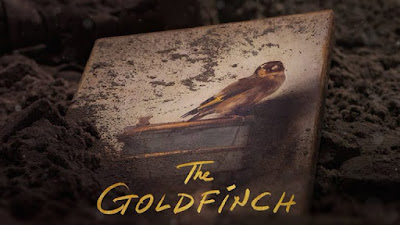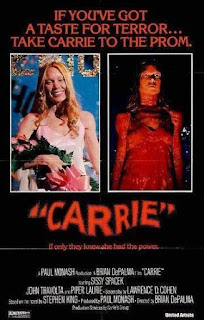You'll Laugh, You'll Scream: Young Frankenstein (Dir Mel Brooks, 1h45m, 1974)
Approaching Halloween, once more we turn to horror. It's tradition; yet, since practically the birth of horror as a cinematic genre, it has so often gone hand in hand with comedy; Abbot and Costello would, in
the late 1940s and early 1950s, make light of the same monsters (including starring roles for Lugosi and Karloff) that had once frightened audiences, and even before this, pushing the envelope of Code-Era horror, would be
features like The Ghost Breakers (1940)-featuring Bob Hope-Spooks Run Wild (1941)-featuring Lugosi and most influential of all, Dead of Night (1945), an early contribution, albeit limited, to British Horror comedy.
The fact is, we love to be amused as much as we love to be scared, the jumps and frights of horror either punctuating comedic plots, or moments of comedic brevity in otherwise tense and nervy films. Over
the next four weeks, we will consider four films that will made audiences scream-with laughter-beginning with Mel Brooks' homage to the 1930s Universal Monster movies in Young Frankenstein.
Young Frankenstein, (or should that be Fronkensteen) largely retells the Mary Shelley story straight; Frederick (the great Gene Wilder, who co-wrote the film with Brooks, during the post production of Blazing Saddles and starred, on the proviso that Brooks did not feature in the film) is summoned to the ancestral home in Transylvania. Soon collecting allies, including Igor (a scene stealing and
rare cinematic appearance for Marty Feldman), who steals every other scene he's in with a knowing look to the audience, and local lass, Inga (Teri Garr), and stumbling across his grandfather, the infamous Victor's
work. Before long, despite his attempts to defy fate, he's digging up bodies, stealing brains from laboratories (with Igor's help), and planning to create a monster, and life!
On paper, thus, Young Frankenstein is, whilst modernising its setting, and, by this point in the 1970s, free of the Hayes Code, a relatively solid adaption of the novel. Frankenstein itself by this point had, after all, essentially had any adaptions, from the Universal adaptions of the 1930s to giant monster battles (courtesy of Japan and Ishiro
Honda, otherwise famous for Godzilla) to B-Movies like Frankenstein Meets the Space Monster (1965) and the faintly bizarre Jesse James Meets Frankenstein's Daughter (1966, directed by William Beaudine and released as a double bill with the even more outlandish Billy the Kid Versus Dracula, both made in eight days), not to mention Spanish language, Blaxploitation and even Andy Warhol putting together
their cinematic version of the Frankenstein tale.
The devil-or should that be the Monster-is in the detail. A good deal of what make Young Frankenstein fun is that, not unlike the film we will consider next week, 1975's Rocky Horror Picture Show, and indeed, the final film of this series, Edgar Wright's Shaun of the Dead. All three of these are films made with affection for, and attention to, the era of the classic horror movie's feel, look, and sound; if Rocky Horror harks back to the 1950s B-Movie, and Shaun of the Dead harks to the 1970s zombie movies of John A Romero et al, so Young Frankenstein is a love letter to the original Universal monster movies.
There are too many little details and references to count, but highlights include the usage of the
original lab set elements from the 1930s James Whale film, designed and built by Kenneth Strickfaden, to the 1930s-style credits, and sound effects, often played as much for their appropriateness as for a laugh. This
is not to overlook the roles of composer, John Morris, cinematographer, Gerald Hirschfeld-who shot the film in black and white- and editor John C. Howard, who captures so much of the period's cinema style
in his use of wipes, fades, and other editing techniques. Between the three of them and the period detail, together with the general outline of the film, this is certainly a fitting homage to this era of filmmaking
This
is only part of why Young Frankenstein works. The other half is, simply, just how much comedic potential is wrung from a familiar story,
especially via an adaption that largely puts the parts together in such a familiar way. This is apparent from the very first shot of the film, in which the corpse of Victor continues to cling to a box later given to his grandson,
snatching it back as an unseen figure attempts to wrest it away, and continues for the next nearly two hours, through the bug-eyed Igor, whose hump shifts back and forth throughout his appearances, and where Feldman and Wilder
form an unconventional duo, one later eclipsed by that of Wilder and Peter Boyle (as the monster), as Frederick Frankenstein attempts to rehabilitate the monster, leading to the famous "Puttin' on the Ritz" sequence.
There
are, as with the homages to horror cinema, too many moments that make you howl with laughter-"Werewolf? There-wolf", the stock sound effect of neighing horses that follow any mention of Frau Blücher (neiiiigh),
the at once stoic and ridiculous figure of Inspector Kemp (Kenneth Mars), who must push and pull his prosthetic arm into place for basic actions, and a hundred other tiny moments that, knitted together by Brooks and his team,
form a nigh perfect monster, both comedic, and cinematically savvy, homage to the glory days of 1930s Universal horror films.
Rating: Must See
Young Frankenstein is available via DVD from 20th Century Studios. It is not available on streaming in the UK.
Next week, if you can bear the antici...pation, to the camp classic, straight from theatreland to Transylvania, as we consider The Rocky Horror Picture Show.



Comments
Post a Comment